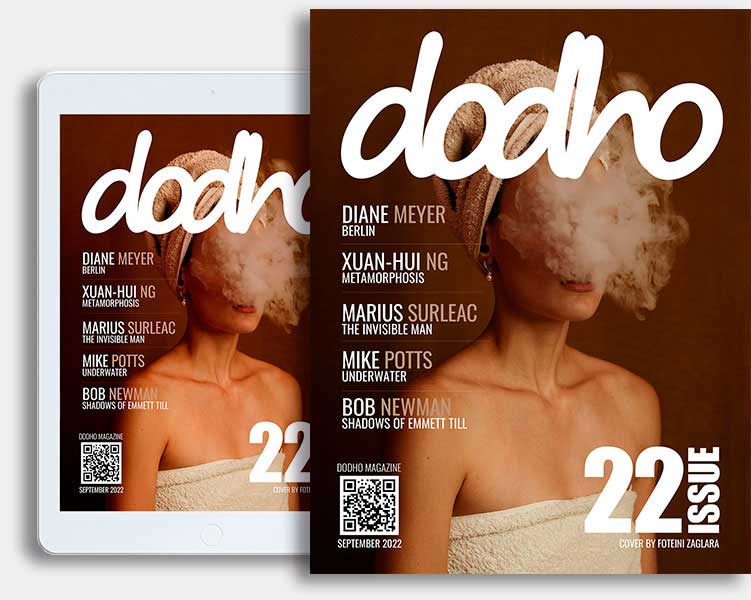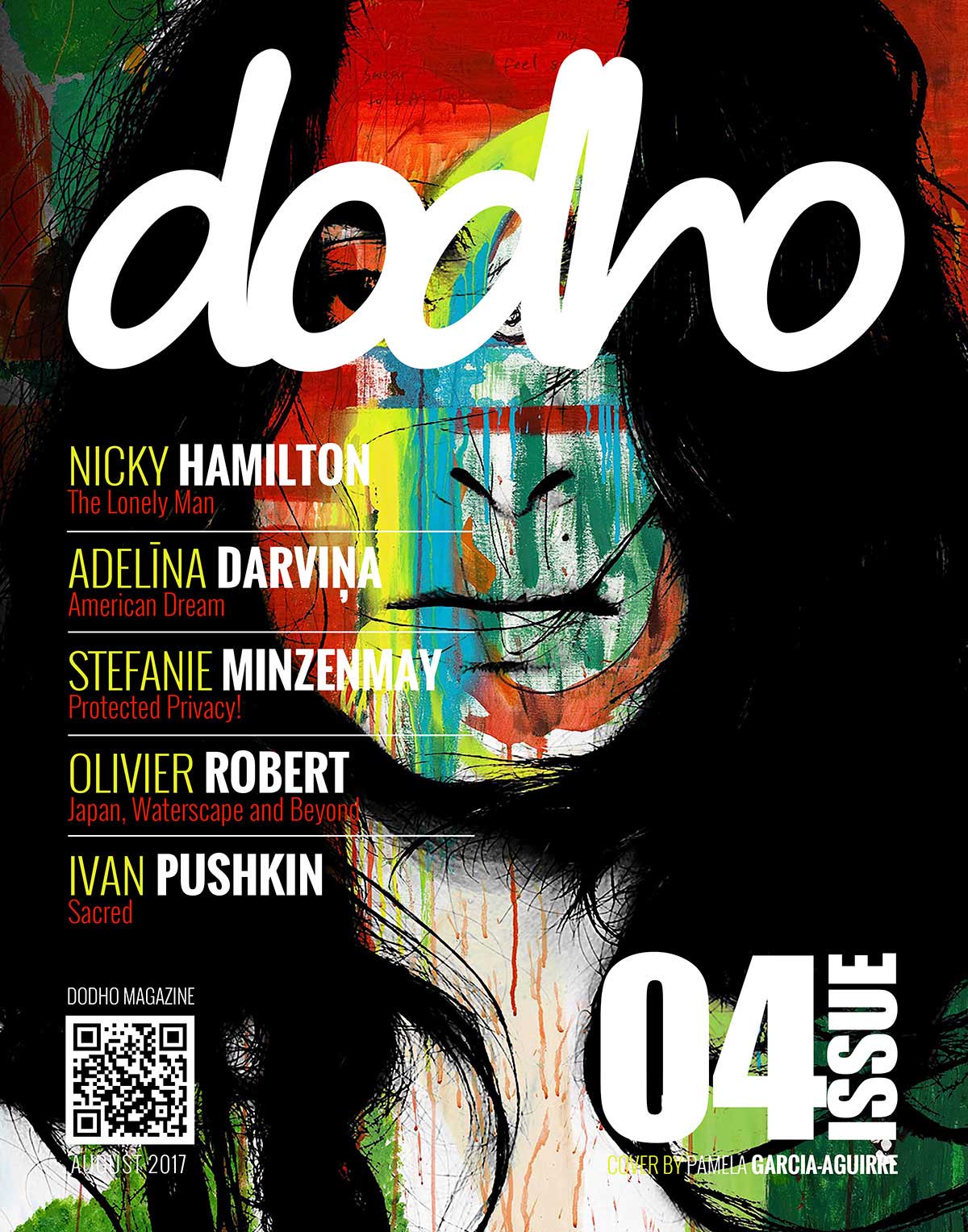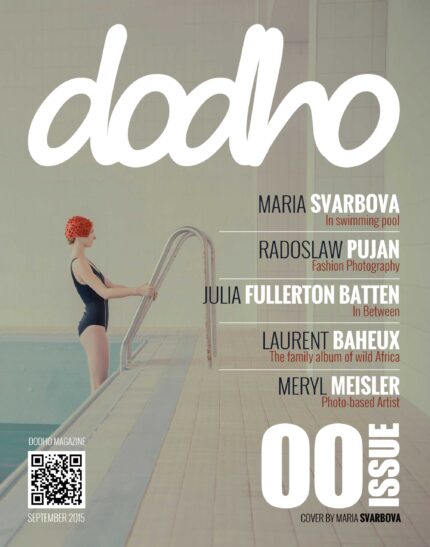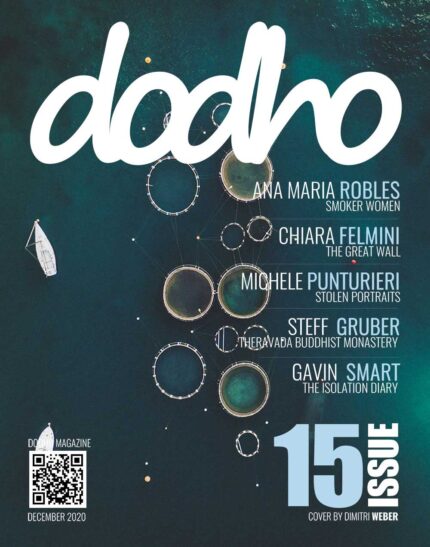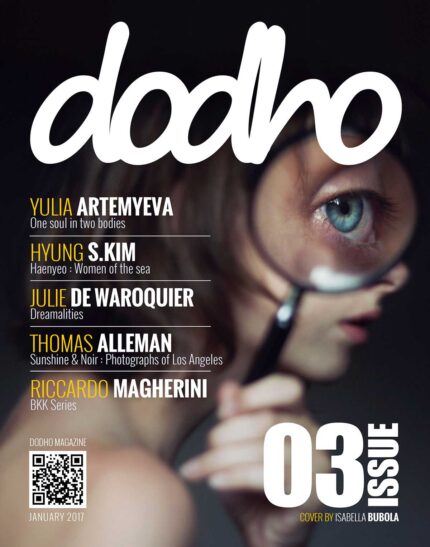Issue #04
Printed on premium 80# matte paper at a perfect size of 22x28cm, our 100-page Dodho Magazine offers an extraordinary tactile experience, immersing you in the world of contemporary photography.
In today’s digital realm, Dodho Magazine has swiftly risen as a leading influencer in contemporary photography. Our mission is clear: unearth and showcase remarkable creations of captivating photographers spanning the globe. This unwavering mission is driven by a passionate commitment to the multifaceted artistry of photography. We invite you to immerse yourself in the vibrant realm of creativity through our complimentary digital edition. Every page acts as a gateway to the core of global contemporary photography. The latest edition proudly displays exceptional endeavors of gifted photographers worldwide. Download your digital copy and join us on this exhilarating visual voyage. If the tangible resonates more, opt for the print version, holding a piece of artistry in your hands.
DOWNLOADPUBLISHED PHOTOGRAPHERS
Pamela Garcia-Aguirre | Cover | She is an editorial, fine art and experimental photographer who currently resides in Los Angeles. Growing up in California she discovered her passion for art at an early age. She later moved to San Francisco to pursue photography and art full-time. Influenced by the world around her, Pamela enjoys capturing and creating stories with a cinematic and experimental approach.Fasci- nated by the strange and magical moments in life, she is inspired by the ancient mysteries of art history, nature, philosophy, and sociolo- gy. Being comfortable on set and in front of the camera has led to collaborations and digital appea- rances with recent collaborations with Lola Blanc and Vice.As well as working on her personal work, she enjoys painting, acting, making music, film making, web desig- ning, writing, and creating books.
Nicky Hamilton | The Lonely man | They fuck you up, your mum and dad. They may not mean to, but they do.” – This Be The Verse by Philip Larkin. The Lonely Man is a deeply personal project. The thirteen piece tableau explores my childhood relationship with my father, a relationship that was conducted through “a maze of police raids, guns, drugs, violence and, ultimately, redemp- tion” after he was declared bankrupt in the 1980s.In the early years my Dad started out as a builder. Things where simple, holidays where plenty and so was the laughter. In the mid 80s my Dad lost his business in a freak incident and had to declare himself bankrupt, post a recent purchase of a dream home he could no longer afford. Maggie Thatcher’s reign had taken hold, the economy was weak and so was my Dad’s judgement.
Olivier Robert | Japan, Waterscapes and Beyond | This project is a 25-year long one about the esthetic value of the man-made objects built on the lake shores or coastlines in Japan and the way they pertain to the landscapes. Over time, the structures left alongside or above the water deeply affect the perception of the landscape one can have and most of the time, without thinking. They gradually belong to the landscape until they are completely mingled.Once they are no longer in use, these constructions are rarely taken to pieces but rather left abandoned. Slowly, these manmade structures become the indicators of the passing time. These remains deeply call me to mind for their singular ex- pression and sometimes for their spiritual presence. Furthermore, some rare places kept the traces of the past like this World War II Training Center off the shores in the Nagasaki prefecture.
Stefanie Minzenmay | Protected Privacy – Protect Yourself! | The photographs are taken from the portrait series “Protected Privacy – Protect Yourself!” which Stefanie Minzenmay started in 2014.The origin of her series was how young people deal with today’s media. As “di- gital natives” their use of the information possibilities offered by the Internet and social networks comes easily and natural to them. At the same time, through the use of social media, infor- mation is also being fed with uncontrollable permanence to this media. Stefanie’s conceptual work plays with the direct opposite. The faces of the children are obscured and hidden which is unexpected and leads to some irritation.Due to its reduction, its natural chromaticity and a large-sized presentation the portraits receive a very strong, almost sculptural presence although a lot of “information” is hidden.Nevertheless, the analogue, haptic image becomes static and significant whilst fleeting digital selfies/images posted to the social media became arbitrarily and get uncontrollable lost to the Internet …
Adelīna Darviņa | American Dream | The American Dream is that dream of a land in which life should be bet- ter and richer and fuller for everyone, with opportunity for each according to ability or achievement. [..] It is not a dream of motor cars and high wages merely, but a dream of social order in which each man and each woman shall be able to attain to the fullest stature of which they are innately capable, and be recognized by others for what they are, regardless of the fortuitous circumstances of birth or position”1. This is how American Dream was defined for the very first time by James Truslow Adams in his book “The Epic of America” in 1931.I started the project “American Dream” back in year 2016 as a part of my bachelor thesis research. On behalf of it, for three months I traveled across the United States, covering more than 21 000 kilometers. During the trip across the country, I was documenting the representation of the American Dream ethos, paying specific attention to the living conditions, social differences and the importance of money in the consumer society.
Ivan Pushkin | Sacred | The tradition of sanctification in the folk Slavic culture was the way to make places and objects sacred, and empower them with purifying and protective effects; it was the separation of the sacral space and everyday life. Recently, Russian society has become quiet sensitive to the boundaries be- tween these areas, as can be seen from the recent discussions in mass media about incidents of prosecutions of people violating these borders in one way or another.The Sacred project is an attempt to examine those boundaries through a number of officially consecrated by the Russian Orthodox Church places and objects for the last few years. I travel around the country in search of places and objects that are supposed to be the achievements of rational mind and human progress, but became spiritual sites, I would like to highlight the consequences of “ideological vacuum” which was formed in the post- Soviet society, but was also a result of global chaos and rational crisis point of view. The attempt to fulfill this “vacuum” through the archaic practices and “traditional” ways of living leads to paradoxical ways of thinking and are makes humankind to become confused in the face of the present day.


